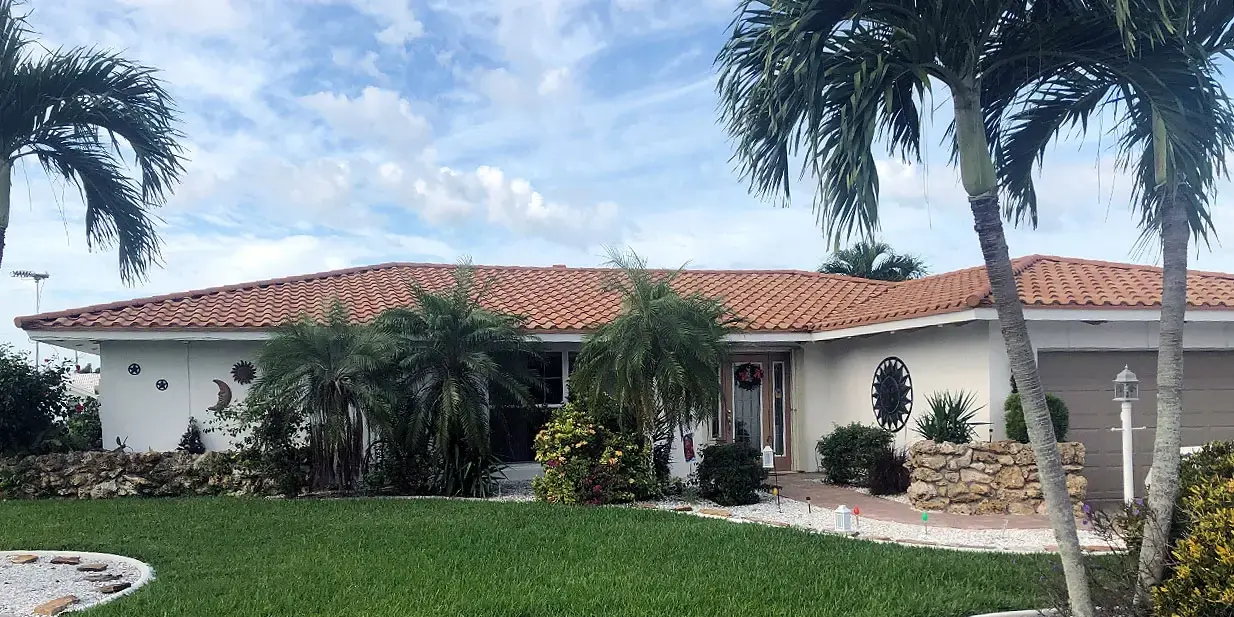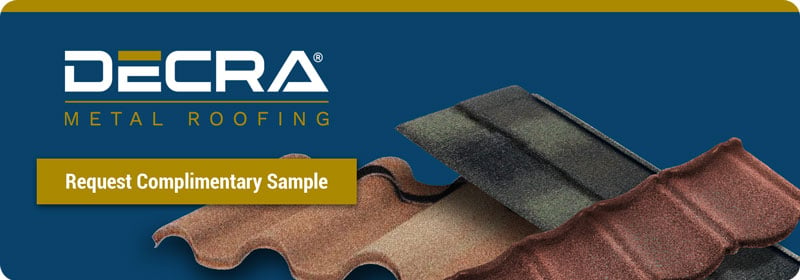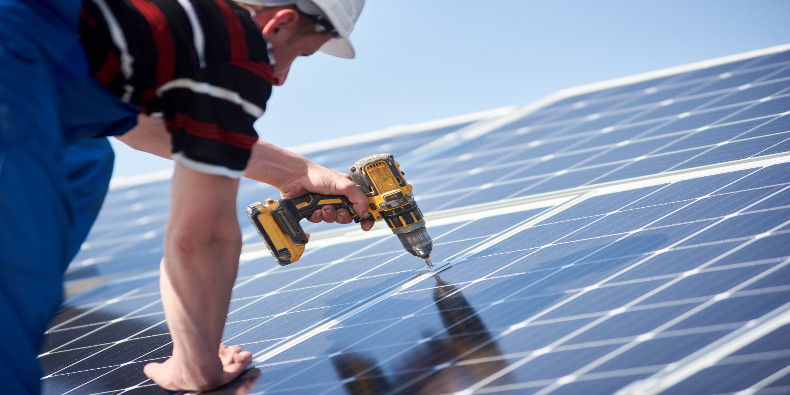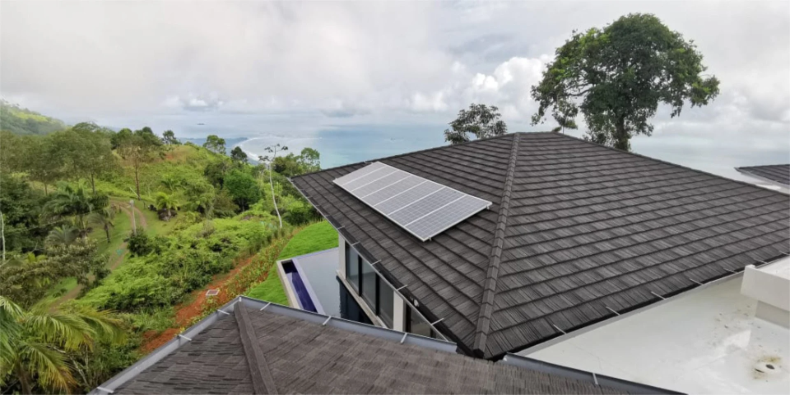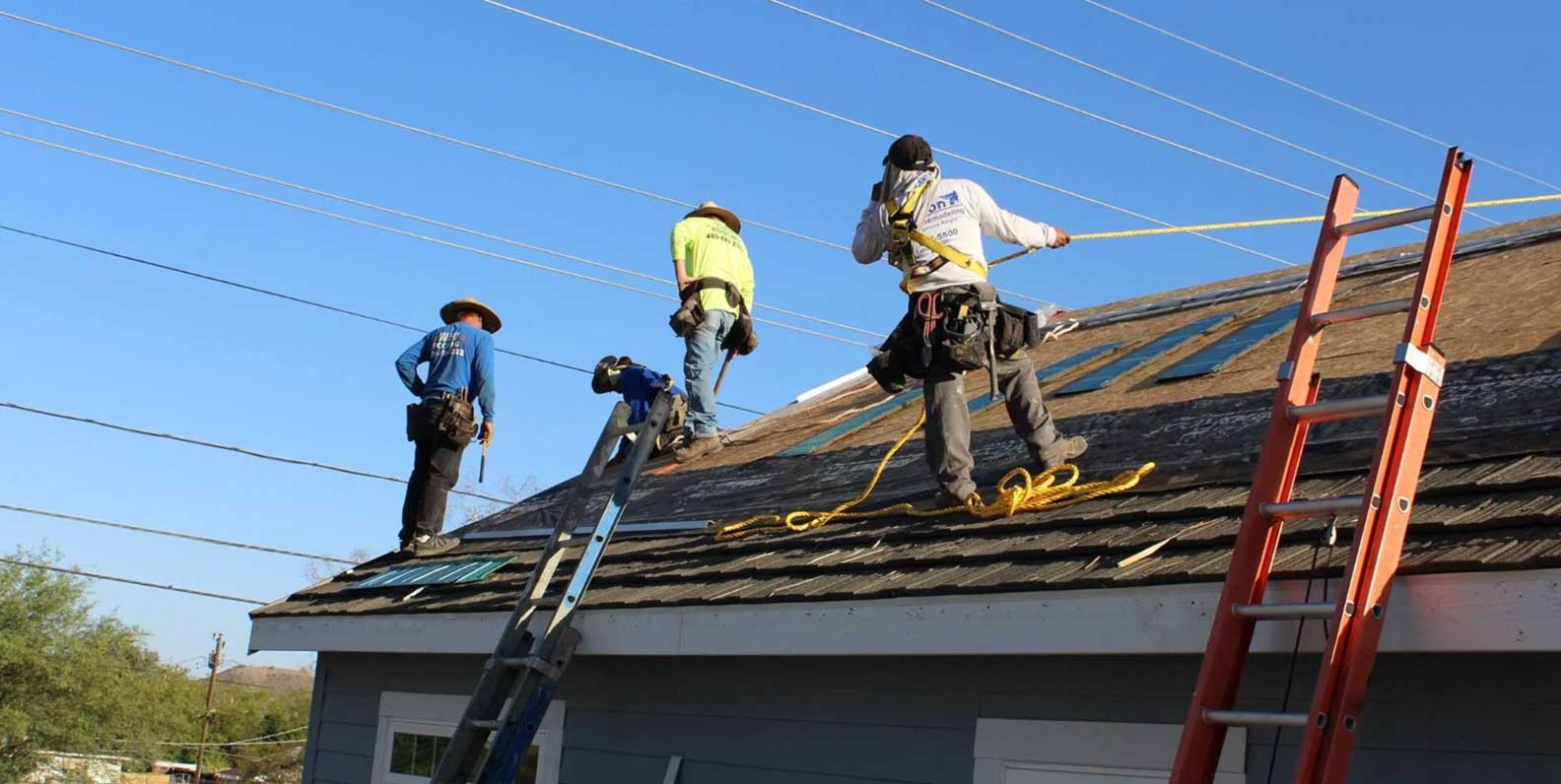Hurricane season is officially underway in the U.S. and runs through the end of November. The question is… is your roof ready?
While no material can make your home completely storm-proof, choosing the right roofing material can make a big difference in how well your home holds up. Some materials may offer a certain aesthetic but are far more vulnerable to storm damage. Metal roofs, on the other hand, are specifically engineered to withstand high winds, heavy rain, and flying debris.
In this blog, we’ll cover what it takes for a roof to withstand hurricane-force weather. You’ll learn:
- The regions most affected by hurricanes
- The most common types of hurricane-related roof damage
- The key features to look for in a hurricane-resistant roofing material
Keep reading to find out how to better protect your home before the next storm hits.
The Locations Most Affected by Hurricanes
The Southeastern U.S. has always been vulnerable to hurricanes, with storms like Andrew, Ike, and Katrina leaving a lasting mark. States like Florida, Alabama, Mississippi, Louisiana, Texas, Georgia, and the Carolinas have grown accustomed to these severe weather events.
But in recent years, hurricanes have increasingly pushed farther inland and up the East and West coasts, hitting places that aren’t typically prepared.
Take Hurricane Sandy in 2012. Though it formed in the Caribbean, it caused destruction across 24 states, including devastating wind, rain, and flooding in New York and New Jersey.
Last year was another season for Atlantic-originating storms. Two of the five tropical cyclones (Helene and Milton) became the costliest U.S. weather disasters of 2024. Helene’s damage reached as far north as Tennessee, Ohio, and Indiana.
And it’s not just the East Coast. In 2023, Pacific Hurricane Hilary brought record-breaking rainfall and high winds to Southern California, knocking out power and damaging homes despite being downgraded to a tropical storm.
Hurricanes aren’t just headlines. They’re billion-dollar disasters that impact homeowners like you. Roof damage is often the most common issue, since your roof is the first line of defense during extreme storms.
With many homeowners still battling unpaid claims from Helene and insurers scaling back coverage in high-risk areas, it’s more important than ever to understand the risks, and how the right roofing material can help prevent costly hurricane damage.
Types of Roof Damage Caused by Hurricanes
Hurricanes rarely cause just one type of destruction. While flooding tends to get the most attention, roofs often suffer extensive damage from wind, rain, and impact. Here's how each plays a role:
1. Roof Uplift
When most people picture a hurricane, they imagine palm trees bent sideways and debris swirling through the air, and that’s not far off.
Hurricanes generate extremely high winds capable of flipping vehicles and tearing buildings apart. These winds are classified using the Saffir-Simpson Hurricane Wind Scale, which defines categories (like Category 3 or 4) based on sustained wind speeds.
But speed isn’t the only factor. Hurricanes also create rapid pressure changes. When the pressure inside your home differs drastically from the outside, it can cause roof uplift, a dangerous effect where roofs peel away from the structure, leaving everything inside exposed. Poorly fastened roofs or those without proper reinforcements are most at risk.
In addition to uplift, high winds can lift and tear off asphalt shingles, clay tiles, or wood shakes, especially if they’re already worn, damaged, or loosely attached.
2. Water Damage
Hurricanes bring massive amounts of rain. During Hurricane Helene, for example, parts of North Carolina experienced unprecedented rainfall.
When rain combines with high-speed wind, it becomes even more destructive. Wind-driven rain can infiltrate even the smallest cracks or weak spots in your roof, damaging the decking underneath and potentially leading to water damage inside the home.
Roofs most vulnerable to wind-driven rain include:
- Old or worn-out roofs
- Damaged and unrepaired roofs
- Lower-quality roofing materials
- Poorly installed systems
3. Punctures and Dents from Debris
Hail is another serious concern, especially when hurricanes move inland or into colder climates. Hailstones can crack, dent, or dislodge roofing materials, making it easier for rain to seep in and for pieces to be torn off in the next gust.
While hail is less common in Southern hurricanes, it becomes more likely as storms track north or inland.
And it’s not just hail. Flying debris, broken tree limbs, and airborne objects can strike your roof with enough force to mimic or exceed hail damage. These impacts compromise the integrity of your roof system, weakening shingles, tiles, or shakes and leaving your home vulnerable to further storm damage.
3 Features to Look for in a Hurricane-Resistant Roof
Ever seen photos of neighborhoods after a hurricane, where one house has its roof torn off while the one next door looks untouched? The difference often comes down to a few key roofing features. To truly protect your home during hurricane season, your roof should have all three.
1. Wind Resistance
Your roof’s first job during a hurricane is staying put. If it fails, there’s nothing left to defend against rain or hail.
While hurricane straps and ties can help secure a roof to the home’s structure, they’re typically only feasible during new construction, not during a standard re-roof.
That’s where metal roofing stands out. DECRA, for example, is warrantied for wind speeds up to 120 miles per hour and has been tested to meet the requirements of the High-Velocity Hurricane Zone in Broward and Miami-Dade Counties, some of the most hurricane-prone areas in the U.S. under the Florida Building Code.
2. Resistance to Wind-Driven Rain
High winds don’t just make rain fall, they force it sideways, driving it into every possible gap. If your roof has any existing damage or weak spots, water can find its way inside fast. Brown ceiling stains? That’s a red flag for water intrusion.
DECRA’s interlocking panels are specifically designed to prevent water infiltration, even in intense storm conditions. They’ve been tested to resist wind-driven rain at speeds of up to 110 miles per hour, helping you avoid costly interior damage.
3. Impact Resistance
Flying debris and hail are more than an eyesore, they can seriously compromise your roof’s integrity. Dings, cracks, and missing materials make your home more vulnerable to future storms.
All DECRA products carry the highest Underwriters Laboratories (UL) rating for hail impact resistance and are warrantied against damage from hailstones up to 2.5 inches in diameter.
Ready to Upgrade Your Home with a Hurricane-Resistant Roof?
When it comes to hurricane protection, metal roofing stands in a class of its own. It’s one of the most durable roofing materials available, engineered to withstand extreme winds, flying debris, and even fire, which can be a secondary threat in hurricane-prone areas.
For your peace of mind, request a complimentary DECRA sample. You’ll see firsthand how DECRA profiles replicate the look of traditional shingles, tiles, or shakes while lasting two to three times longer and delivering unmatched protection against the elements.

